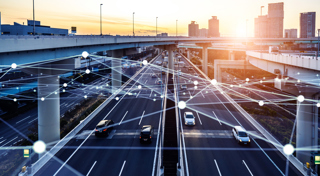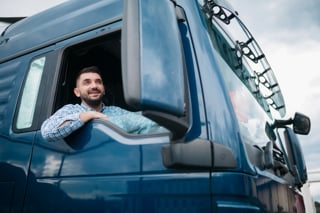Fleet decarbonisation strategies should focus on decarbonising drivers first, rather than just concentrating their efforts on replacing petrol and diesel vehicles with electric models, according to Lightfoot.
With many businesses needing to report emission reduction plans this year, and the viability of electric commercial vehicles still unclear, Lightfoot says that better driving can bring about carbon reductions of around 15% almost immediately.
Paul Hollick, managing director at Lightfoot, believes there are a number of pillars involved in decarbonisation, with the main three being vehicle choice, operational decisions and drivers.
“Decarbonisation is on the radar of every business this year, but it is not simply a switch that can be flicked for an entire fleet straight away,” he said. “You need to look at decarbonisation as a three-pronged assault with varying timescales.”
In the longer term, whether it be in electric, hydrogen, synthetic fuel or just much cleaner internal combustion engines, Hollick says that vehicle choice will have the ultimate effect on decarbonisation.
In the medium term, there are operational decisions a business can make which will reduce carbon emissions, such as where and how they source fuel, what routes they take, and how the business chooses to work, either through less miles driven or switching to alternative means of transport, he added.
However, in the short term, Hollick explained: “There is one clear winner when it comes to decarbonisation: the driver.
“Any business can massively reduce its carbon output within a matter of weeks by helping its employees to drive better.
“Being more efficient behind the wheel could reduce carbon output by as much as 15%, which also then has the added benefit of lower running costs.”
While changing all vehicles to electric straight away may not be possible for various operational and economic reasons, for many fleets the process of decarbonisation still needs to begin now, with larger businesses having to report their carbon emissions as part of their ESOS 3 reporting, while also detailing how they are going to take steps to reduce it in future.
At the same time, the new Zero Emission Vehicle (ZEV) Mandate ensures that from this year (and increasing each year in the future), manufacturers must sell a higher proportion of electric vehicles (EVs) as part of their total registrations.
This year is the least stringent, but fleets may find that the issue will quickly become more pertinent as the choice of petrol and diesel models reduces in the coming years.
Decarbonising drivers buys a business time and allows it to make strategic decisions from a position of strength, where it is already reducing emissions and costs, irrespective of the vehicles it is running, argues Lightfoot.
“You need to look at each driver, and their role, individually,” said Hollick. “There is no point being dogmatic and just saying every driver must be in an electric vehicle, and therefore the decarbonisation box has been ticked, and the job done.
“Instead, set yourself the target of ‘How do we decarbonise as effectively as possible this year first?’. Only then can you look at next year, or the year after that.
“Decarbonisation needs to happen in incremental steps – but make sure those steps are as big as practically possible.”
Lightfoot helps fleets decarbonise their drivers through on-board coaching, using a dashboard mounted device and a driver rewards platform to deliver behavioural change.
Over the past year, commercial vehicles driven with Lightfoot’s technology saved 36,488 tonnes of carbon emissions from being created through smoother, more efficient driving.
“Once you have electric vehicles on fleet, there is still a decarbonisation issue to manage,” said Hollick. “While there are no tailpipe emissions, the electricity used still creates emissions.
“The Lightfoot system not only makes running EVs more viable from a practical perspective, but also ensures that their carbon footprint is as light as possible, by using as little energy as possible. That way, a fleet can truly claim it has done everything possible to decarbonise.”























Login to comment
Comments
No comments have been made yet.